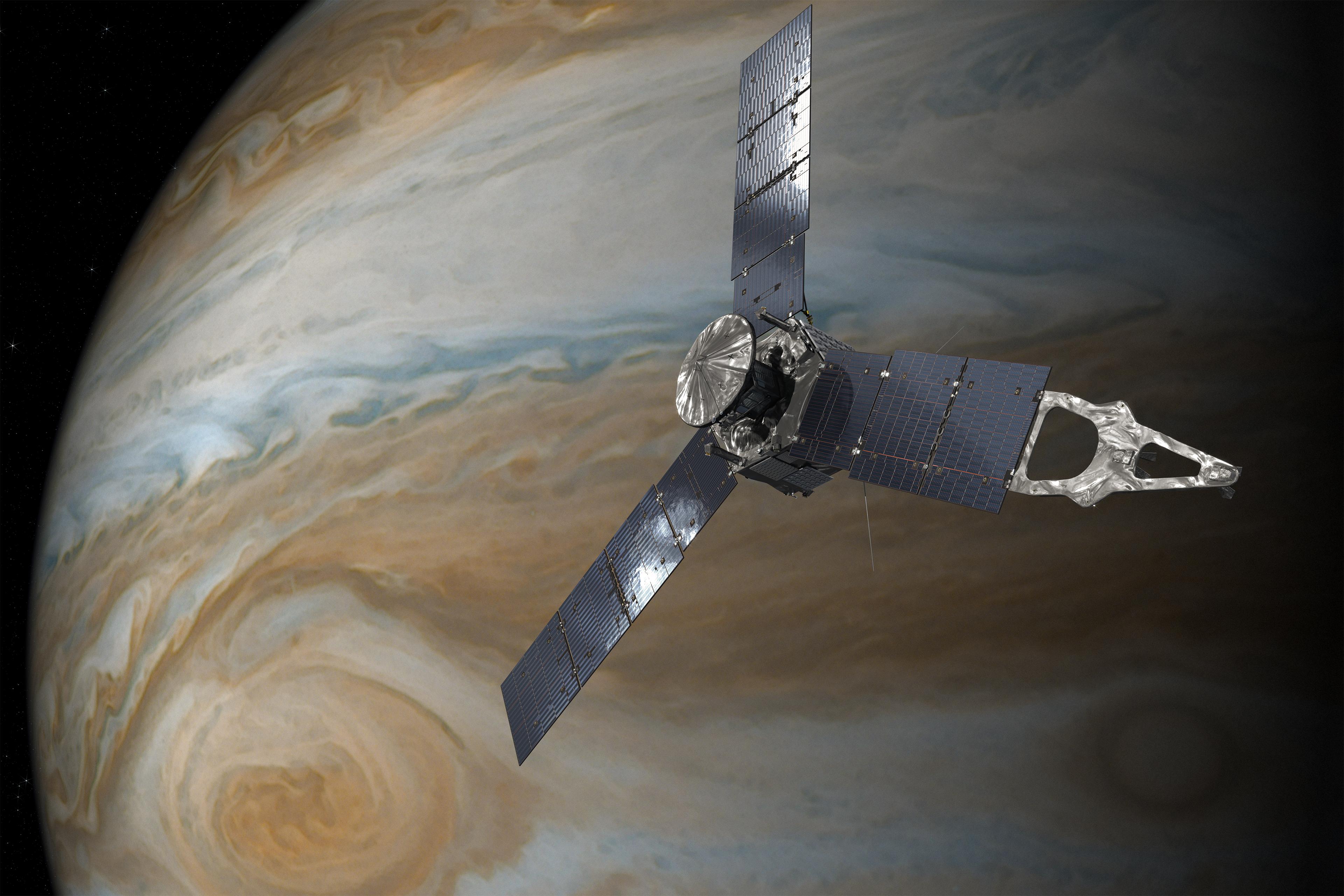
Juno Spacecraft Completes Flyby of Jupiter's Great Red Spot

Success! NASA's Juno mission has completed a close flyby of Jupiter's Great Red Spot.
All of the probe's science instruments were operational, NASA officials said in a statement, as was the craft's JunoCam. Data and photos are now streaming back to Earth. Raw images of the gigantic storm, 1.3 times as wide as Earth, should be posted in the next few days, NASA said.
Juno approached closest to Jupiter's center on July 10 at 9:55 p.m. EDT (0155 on July 11 GMT), at which point the probe was just 2,200 miles (3,500 kilometers) above the planet's visible cloud tops. After 11 minutes and 33 seconds, Juno passed directly above the Great Red Spot at a height of 5,600 miles (9,000 km). This flyby came as part of Juno's sixth science orbit around the planet; the next close flyby will occur Sept. 1. [Amazing Jupiter Photos by Juno]
"For generations, people from all over the world and all walks of life have marveled over the Great Red Spot," Scott Bolton, Juno's principal investigator, from the Southwest Research Institute in San Antonio, said in the statement. "Now we are finally going to see what this storm looks like up close and personal."
Juno launched in 2011 and arrived at Jupiter on July 4, 2016. During a series of long orbits, the spacecraft is diving down to investigate the gas giant planet over 12 flybys. The researchers will combine Juno's observations of the Great Red Spot with data gathered by ground-based telescopes on Earth to discern what's happening deep inside the whirling storm.
Email Sarah Lewin at slewin@space.com or follow her @SarahExplains. Follow us @Spacedotcom, Facebook and Google+. Original article on Space.com.
Get the Space.com Newsletter
Breaking space news, the latest updates on rocket launches, skywatching events and more!
Join our Space Forums to keep talking space on the latest missions, night sky and more! And if you have a news tip, correction or comment, let us know at: community@space.com.

Sarah Lewin started writing for Space.com in June of 2015 as a Staff Writer and became Associate Editor in 2019 . Her work has been featured by Scientific American, IEEE Spectrum, Quanta Magazine, Wired, The Scientist, Science Friday and WGBH's Inside NOVA. Sarah has an MA from NYU's Science, Health and Environmental Reporting Program and an AB in mathematics from Brown University. When not writing, reading or thinking about space, Sarah enjoys musical theatre and mathematical papercraft. She is currently Assistant News Editor at Scientific American. You can follow her on Twitter @SarahExplains.









